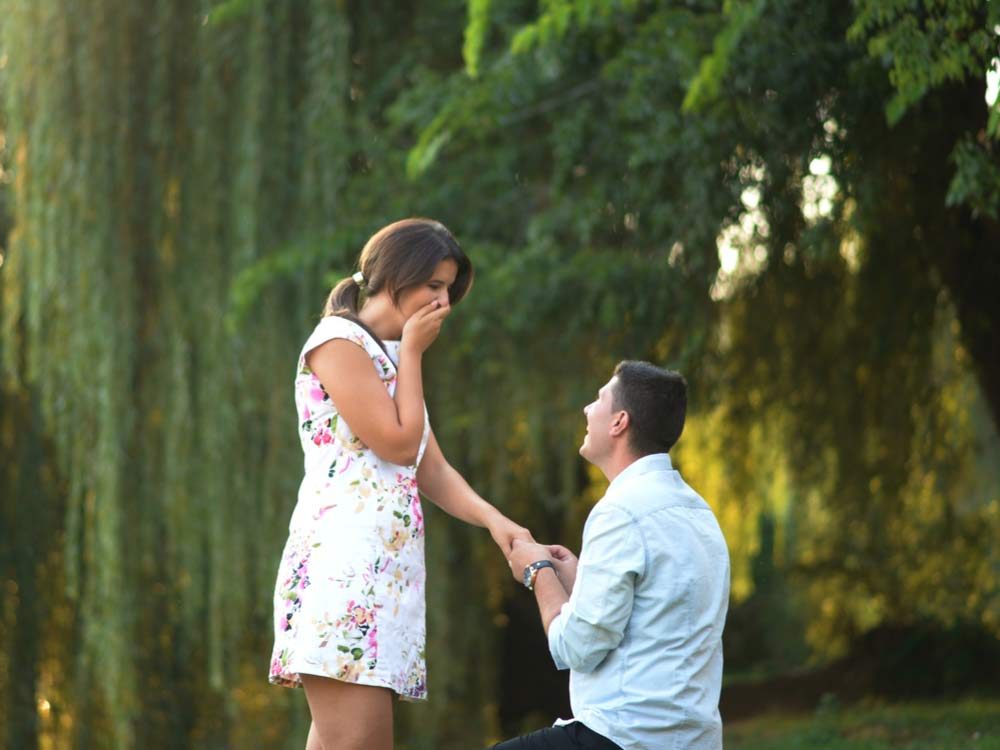
Ever Wonder How Many Vegetarians and Vegans Go Back to Eating Meat?
Making the decision to go vegan or vegetarian has plenty of perks for your health and the planet. Still, it can be a tough switch to make, especially for Australians and Americans, who eat more meat per capita than any other people on Earth. The switch is one thing, but according to a new study from the Humane Research Council, sticking with it is even tougher.
The study, which analyzed a representative sample of 11,000 U.S. participants 17 and older, found that 84 percent of people who have adopted vegetarianism or veganism at some point in their lives have gone back to eating meat. A bit less than one in five vegans and vegetarians maintain their diet. (Maintaining the diet often involves adopting these 4 Meat Alternatives for Vegetarians.)
But the research went a bit further, digging into the rationale behind the diet drop. The researchers posit that some of the drop might be due to a lack of a gradual transition into the diet; 65 percent of former vegetarians and vegans said they made the transition abruptly, over a few days or weeks. For current vegetarians or vegans, only 53 percent transitioned that quickly. (Here are 3 Vegetarian Myths Put to the Test!)
The current vegetarians and vegans have different motivations than the former, however. Most (58 percent) in the former group cited just only health as the main motivator, while most in the current group named several factors, including personal health, animal welfare, and environmentalism.
Check out these 7 Eating Tips for Vegetarians!
[Source: Fast Company]

This Is the Secret to Learning a New Language
When it comes to learning a new language, the old saying “practice makes perfect,” actually has some merit. A new study that focused on how language is acquired in the brain, found that repetition is an important part of the language learning process. (Learning Spanish? These are the Spanish words everyone should know.)
The study done by Lilli Kimppa from the University of Helsinki looked at the ways our brains respond to new words over short periods of exposure, Science Daily explains. For her research, Kimppa worked with Finnish-speaking volunteers, measuring their neural response with electroencephalography (EEG) during spoken tasks that included repeated words in their native Finnish language and non-native language. Words were presented for no more than 30 minutes in two conditions: “participants were either passively exposed to the spoken words in the background, or they attended to the speech. Similar neural enhancement to novel words was observed in both listening conditions.” At the study’s conclusion, it was found that exposure to quick, repeated novel words showed a response in the brain that suggests one had memorized the language.
“Unlike the response to existing words, new words showed a neural response enhancement between the early and late stages of exposure on the left frontal and temporal cortices, which was interpreted as the build-up of neural memory circuits,” Kimppa said. “The magnitude of this neural enhancement also correlated with how well the participants remembered the new words afterwards.” (You’ll love these amazing facts about the English language!)
Through her study she was able to explore how volunteers’ previous language backgrounds would affect their word memory-trace formation, which is the process of how we’re able to memorize. The study revealed that there was a great response to new non-native words in volunteers with previous foreign language experience. This signals an increased “flexibility of the brain to acquire the speech with novel phonology.” (You’re not alone when it comes to deciphering these hard-to-pronounce words.)
So what does this research mean for children learning new vocabulary words? Along with her study on adult volunteers, Kimppa also looked at “rapid neural word learning” in children ages 9 to 12 with dyslexia and normal reading abilities. Children who could read normally showed a faster response to a novel word within six minutes of passive perceptual exposure, but children with dyslexia demonstrated no neural change throughout the 11-minute test.
“This suggests deficient rapid word learning abilities of the brain in dyslexia compared to non-affected peers. Dyslexics possibly need even more repetition or different kinds of learning strategies to show the neural effect,” Kimppa said.
If you teach your child these three languages, you’ll be raising a future CEO.

The History Behind Computer Keyboards
If you’ve ever looked down at your keyboard and wondered why it’s not in alphabetical order, you’re not alone. But who came up with the current design, anyway? A few popular myths abound, but one Japanese study got to the root of it. (Hint: This design dates back way farther than you think.)
(Here are the top specs you need to be aware of before buying a computer.)
Myth #1: The keyboard is designed in accordance with letter usage to allow for the fastest typing possible.
This idea makes sense: Designers must have looked at the varying degrees of usefulness of each letter and attempted to evenly split them between each hand. That way, we could type quickly and not have one hand doing more work than the other.
Myth #2: The design is a relic of the typewriter era, and was engineered to stop the machine from jamming.
This myth is the opposite of the first, and alleges that the QWERTY design was meant to slow typists down in order to stop the typewriter from jamming. While it’s unclear whether or not separating the useful keys makes typing a slower endeavour or a faster one (as the creators of the first myth would argue), this one’s also been debunked.
The truth: The design is a hand-me-down from morse code transcribers.
We’re guessing you didn’t expect this, so we’ll let Smithsonian reporter Jimmy Stamp, who originally sleuthed through the Japanese study, explain.
“The QWERTY system emerged as a result of how the first typewriters were being used. Early adopters and beta-testers included telegraph operators who needed to quickly transcribe messages. However, the operators found the alphabetical arrangement to be confusing and inefficient for translating morse code. The Kyoto paper suggests that the typewriter keyboard evolved over several years as a direct result of input provided by these telegraph operators.”
(Spell check won’t catch these nine spelling and grammar mistakes.)
It’s an interesting idea, but now that we’ve moved from morse code to iPhones, we’re thinking it might be time for a new system.
Check out 51 Favourite Facts You’ve Always Believed That Are Actually False.

What exactly is a cold?
“The common cold is a viral infection of your nose and throat (upper respiratory tract). It’s usually harmless, although it might not feel that way,” say the experts at the Mayo Clinic. Common colds are the main reason your kids miss school and you miss work. The Centers for Disease Control and Prevention (the CDC) reports that millions of people get the common cold every year in North America, with adults averaging two to three per year. Children average even more than that, and children under the age of six are especially susceptible. (Here are 10 Ways to Beat a Cold.)
How are colds spread?
Forget what your mom said about catching a cold from going outside with wet hair—it’s not true. The common cold is caused by a virus. In fact, there may be as many as 200 viruses that cause common cold symptoms, with rhinovirus being the most common, according to Megha Tewari, MD, family practice and geriatrics physician with Memorial Hermann The Woodlands Medical Center, who tells Reader’s Digest that cold viruses spread through the air, through bodily fluids, and from touching surfaces on which virus particles have settled. That said, your mom wasn’t completely wrong: Weather or temperature changes and being out in the cold weather without dressing warmly stresses the body’s immune system, rendering you less capable of fighting off a cold virus. “Any kind of stress can make you more susceptible to catching a cold,” Dr. Tewari points out.
How long does a cold last?
Most people fully recover within seven to 10 days, but Dr. Tewari breaks down the length based on your symptoms:
- sore throat: usually runs its course within the first day or so
- mild headache: usually resolves within a few days
- mild body ache: usually resolves within a few days
- low-grade fever: usually resolves within a few days
- fatigue: may linger for the first week to 10 days
- nasal congestion: may continue for one to two weeks
- coughing: may continue for one to two weeks
If you’re a smoker or exposed to second-hand smoke, your cold symptoms could last even longer. In addition, people with weakened immune systems, asthma, or conditions that affect the lungs and breathing passages may develop more serious health conditions in addition to the cold (such as pneumonia and bronchitis).
What to watch out for
The discharge from your nose may become thicker and yellow or green in colour as a common cold runs its course, but this shouldn’t be cause for alarm. However, you should see your doctor if you experience any of the following:
- a temperature higher than 100.4° F
- symptoms that last more than 10 days
- symptoms that are severe or unusual
The cure for the common cold
Sorry, there’s still no cure. Antibiotics won’t make it better, and there’s no vaccine. All you can really do, according to Dr. Tewari, is to rest and hydrate, and once your immediate symptoms pass, she says, you should be able to return to work.
To protect yourself from getting a cold in the first place, keep your hands clean and away from your eyes, nose, and mouth, and steer clear of people who seem like they have colds. To protect others from getting your cold, stay home for as long as you can while you’re symptomatic, and make sure to use proper etiquette while sneezing—blow into a tissue, or you elbow, not your hand!
You’ve heard the expression, “Feed a cold, starve a fever”? It turns out These 8 Foods Can Help Relieve Cold Symptoms and Speed Up Your Recovery!

The Driving Mistake Most of Us Make
Consider this: It costs you an average of $1,400 every year to sit in traffic. And if that doesn’t fill you with (road) rage, what if we told you that those wasted dollars are—partly—your fault?
Sure, it’s possible that you have a perfect driving record, as well as zero accidents or speeding tickets. But as it turns out, you’re causing a traffic jam just by keeping the wrong distance from the car behind you, new research has found.
Seems counterintuitive, right? You can’t control how close you are to the car behind you, after all. But ideally, you’d keep an equal distance between yourself and the car in front of you, as well as yourself and the car behind you—also called bilateral control. According to mathematical models developed by researchers at MIT, if everyone kept an equal distance between the cars ahead and behind them, traffic would move almost twice as quickly.
This is easier said than done, of course. For most of us sitting behind the wheel, perfectly spacing ourselves is a virtually impossible task. So don’t beat yourself up if you can’t get it down pat. “This is what happens when you have a control system that is simply trying to keep up with the vehicle in front,” Berthold Horn, study co-author and MIT professor, told Wired. “And its job is not to make the world better, to have hundreds of cars moving in unison. It’s very myopic.”
Just one more reason for self-driving cars to become the norm—stat. In fact, we’ll be crossing our fingers that they are one of the technology trends you can expect to see dominate the auto industry in the years to come.
[Source: Wired]
Bonus: There’s a Shocking (and Scary) Link Between Driving and Your Mental Health, According to Science!
Originally published as The Mathematical Way You’re Probably Driving Wrong on ReadersDigest.com.

In Conversation With Drew and Jonathan Scott, TV’s Property Brothers
Reader’s Digest Canada: Property Brothers premiered in 2011, and since then, renovation TV has exploded. Why is the genre so popular?
Jonathan Scott: Everybody lives somewhere and everybody loves talking about real estate. Nowadays, with the rise of the DIY movement, renovations certainly feel more attainable; you may not always need $100,000 to do one. Also, when you look at what’s on TV right now, especially with the current political landscape, it’s very distressing. There was an article that came out around Christmas last year that said HGTV was saving the world because it’s the one place where parents can turn for safe programming. We even recently had a five-year-old walk up to us on the street and shout “Mom! Mom! It’s the Property Brothers!”
Drew Scott: It blows my mind that kids would be into renovation TV, but I love that a whole family can watch our shows together.
Reader’s Digest Canada: Your new show is Property Brothers at Home: Drew’s Honeymoon House. Does that mean you’re no longer living together?
Jonathan Scott: I decided it was time to have my own place in Vegas, so I kicked Drew and his fiancee, Linda [Phan], out.
Drew Scott: Ha! Linda and I both wanted to live in Los Angeles and spent a long time looking. We were specifically searching for something that needed a full-scale renovation and finally found an old house in Hancock Park that was built in 1921. Linda went to school fro architectural design, so we’re planning it together. And Jonathan’s here to help, too.
Jonathan Scott: Drew has added so many elements to the renovation but he hasn’t given me any more time to complete it!
Reader’s Digest Canada: Drew, you proposed to Linda late last year. How did you do it?
Drew Scott: It was six months in the making. I designed a cake inspired by Dr. Seuss’ Oh, the Places You’ll Go—one of Linda’s favourite books—designed the ring and went into the studio to record “Marry Me” by Train. I took her out for dinner, and when we ordered dessert, the song played on the radio and out came the cake, with a character on top holding the ring. Linda saw it and she said, “That’s amazing, but I ordered carrot cake.” When she turned around I was down on one knee.
Reader’s Digest Canada: Here I thought Jonathan was supposed to be the romantic twin.
Drew Scott: Jonathan is a huge romantic, but really, we both are.
Reader’s Digest Canada: Relationships have often played a role in your show, as you regularly work with couples trying to combine their design tastes.
Jonathan Scott: Yes, and sometimes I feel like we’re more therapists than we are a contractor and a real estate agent. My advice to couples is to share as many ideas as possible, clip out pictures and find images online. Then look for consistencies.
Reader’s Digest Canada: Speaking of taste, the Canadiana look is very “in” these days. Have you been inspired by it?
Drew Scott: We’re not putting maple syrup and Canadian flags in our work, but we do include a lot of rustic features. When we renovated our parents’ place, just outside of Calgary, we did a Rundle rock fireplace that was just like the one we had in our home growing up.
Jonathan Scott: And I wear my Canadian tuxedo—head to toe denim—while I work.
Reader’s Digest Canada: In addition to the new show, you also co-authored a memoir that came out earlier this year called It Takes Two: Our Story. What made you want to share?
Drew Scott: Our fans are always asking us questions about our lives and our backstory, so we wanted to answer them.
Jonathan Scott: We agreed that if we were going to write a memoir, the most important thing would be to not omit anything. It talks about my divorce and my bankruptcy when I was younger. We weren’t born with a silver spoon, and it wasn’t always an easy path, but we have been fortunate to always be surrounded by amazing people.
Reader’s Digest Canada: What do you miss the most about living together?
Drew Scott: Whenever I would be home, we would get to hang out and chat like when were kids. I miss that.
Jonathan Scott: We still see each other all the time, though. And I’ve secretly created a guest suite at Drew’s place so I can stay there. I’m not even giving him a copy of the key.
Catch Property Brothers at Home: Drew’s Honeymoon House on HGTV Canada.
Can’t get enough of HGTV’s home improvement experts? Check out Bryan Baeumler’s Kitchen Reno Commandments!

The Importance of Having a Mean Friend
Typically, all we want from a friend is support—unconditional, uncritical, and unwavering support. OK, that’s not completely realistic, but new research suggests it may not even be healthy. (By the way, you should never say these things to your single friend.) According to a study from the University of Plymouth, when a friend is cruel, she or he might actually be kind—even if it doesn’t feel that way.
Researchers in the UK developed a theory that when we put ourselves in another person’s shoes, we might choose to be critical if we thought it could help that person achieve an important goal: Imagine the friend who keeps making terrible relationship choices, for example, and you’d love to get her to stop. To test the theory, the researchers asked volunteers to play a violent video game, and then give advice to a partner who was going through tough personal times on winning the game. (The partner was imaginary.) The researchers found that volunteers were more likely to go negative if they felt it was important for their partner to win the game. (It turns out smarter people are more judgmental—here’s why.)
Based on the results, the researchers concluded that empathy led people to choose negative emotional experiences for their partner because they believed this would ultimately help their partner be successful. Extrapolating this to real life, being frank with the person who keeps dating criminals could help them out in the long run.
But if you’re going to take this approach, it’s important to go about it the right way. According to the study, you shouldn’t berate your friend or make them feel like a fool. Instead, you want to present the situation in a way that your friend can imagine a worst-case scenario. Ask them how they would feel if they had to go through yet another heartbreak coupled with identity theft, as opposed to telling them they have terrible taste in partners. This alternative perspective can help increase your friend’s chances of making better decisions and reaching their goal (here are some proven ways to help everyone make better decisions). “These findings shed light on social dynamics, helping us to understand, for instance, why we sometimes may try to make our loved ones feel bad if we perceive this emotion to be useful to achieve a goal,” says study author Belén López-Pérez, a psychological scientist who is now at Liverpool Health University, in ScienceDaily.
Here are 5 Subtle Habits You Have That Make People Trust You.

Why Do We Propose on One Knee?
A traditional marriage proposal typically plays out like this: Your partner bends down on one knee, betroths themselves to you, and presents a sparkling diamond ring nestled in a black velvet box. But why do we get down on one knee to pop the question in the first place? (Find out why we wear wedding rings on the fourth finger.)
Unfortunately, nobody can agree on the historical origins of this romantic gesture, but there are a few reported theories that show promise.
During the Middle Ages, chivalry was not yet dead and formal courtship was the medieval version of modern-day dating. Kneeling was also the protocol for many ceremonial rituals and rites of passage, including those of the romantic kind. Medieval artwork and literature show knights genuflecting before their feudal lord as a sign of honour and respect, or kneeling in front of a noblewoman to express their eternal servitude and admiration in a show of “courtly love.” (Here’s the notably unromantic reason we have bridesmaids and groomsmen at weddings.)
But medieval rituals aren’t the only possible explanation; religion may play a role as well. Many faiths, like Christianity and Islam, have their worshippers kneel in prayer to express their devoted service and everlasting respect for their God.
So when your beloved takes a knee and whips out that ring, they’re not only hoping you’ll say “yes,” they’re telling you you’re worthy of honour, respect, and love that lasts an eternity.
Now that we have that answer, the true question is why are wedding dresses white? And, as far as the wedding ceremony itself goes, what are the luckiest wedding traditions in the world, and what wedding etiquette rules should never be broken? The more you know!